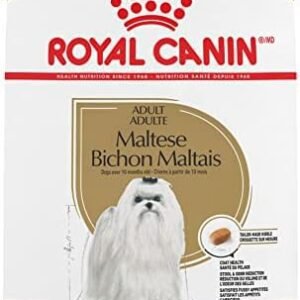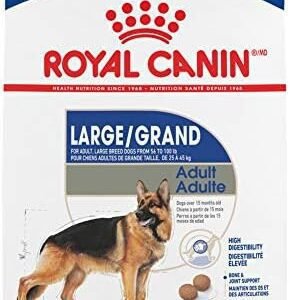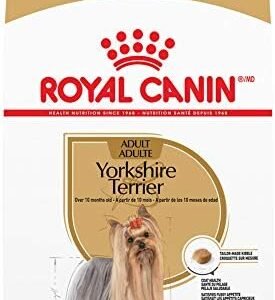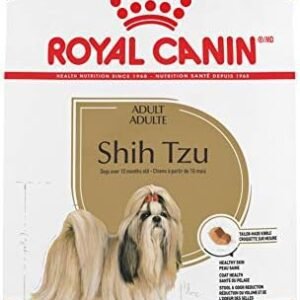Introduction
Are you curious about what your canine companion can and cannot eat? Perhaps you’ve heard that plums are a delicious and nutritious fruit, and you’re wondering if they can be shared with your furry friend. While plums are undeniably delectable, it’s vital to consider your dog’s well-being when offering them human foods. In this article, we embark on a journey to explore the safety and suitability of plums for dogs. We’ll answer the pressing question: Can dogs eat plums? Additionally, we’ll delve into the pros and cons of feeding plums to your dog, discuss appropriate serving sizes, and offer guidance on what to do if your dog happens to consume a part of the plum that is not edible or safe for dogs.

As responsible pet owners, we all want the best for our dogs. That includes providing them with a balanced and safe diet. So, join us in uncovering the facts about plums and their place in your dog’s diet. Let’s ensure that every treat we offer our four-legged friends is not only delicious but also in harmony with their well-being.
Table of Contents
Can Dogs Eat Plums?
The question of whether dogs can enjoy the delightful taste of plums is a common one among pet owners. Let’s dive into the world of plums and discover whether they are a safe and suitable addition to your dog’s diet.
Are Plums Safe for Dogs?
Plums themselves are not inherently toxic or dangerous to dogs. These juicy stone fruits are packed with flavor and can be quite enticing to our canine companions. Some dogs may find the sweet and slightly tart taste of plums absolutely irresistible.
Nutrition Facts of Plums for Dogs
To assess the suitability of plums for dogs, it’s essential to examine their nutritional content. Here’s a glimpse of the key nutrients found in plums:
| Nutrient | Content (per 100g of plum) |
|---|---|
| Calories | 46 |
| Carbohydrates | 11.7g |
| Fiber | 1.4g |
| Sugar | 9.9g |
| Vitamin C | 9.5mg |
| Vitamin A | 345 IU |
| Vitamin K | 6.4 mcg |
| Potassium | 157mg |
Plums are relatively low in calories, making them a suitable treat for dogs. They are an excellent source of vitamin C, which supports the immune system and skin health. Plums also provide vitamin A for vision and vitamin K for blood clotting. The potassium content helps maintain proper muscle and nerve function.
Drawbacks of Feeding Plums to Dogs
While plums offer a range of nutrients, it’s crucial to be aware of potential drawbacks. Plums have a relatively high sugar content, with almost 10 grams of sugar per 100 grams of fruit. Excessive sugar consumption can lead to weight gain and potential health issues, including diabetes. Additionally, plums contain a pit or stone, which can be a choking hazard if not removed before offering the fruit to your dog.
It’s important to clarify that plums should be considered as an occasional treat and should not replace your dog’s primary diet. A balanced and well-formulated dog food provides all the essential nutrients your dog needs for a healthy and active life. Plums can complement your dog’s diet when offered in moderation, but they should not become a dietary staple.
In the following sections, we will explore appropriate serving sizes of plums based on your dog’s weight and discuss the risks and benefits associated with plums. We’ll provide you with all the information you need to make informed decisions regarding plums and your dog’s diet.
How much Plums Can a Dog Eat?
When it comes to offering plums to your dog, moderation is the golden rule. Plums can be a delectable addition to your dog’s diet, but it’s crucial to maintain control over the quantity and frequency of this treat.

Moderation is Key
To ensure the well-being of your furry friend, it’s essential to understand that treats, including plums, should not constitute more than a certain percentage of your dog’s daily calorie intake. The exact percentage can vary depending on your dog’s age, weight, and activity level. A common recommendation is that treats should not exceed 10% of your dog’s daily calories. This guideline helps prevent excessive calorie consumption, which can lead to weight gain and related health issues.
Start Small and Observe
Before offering plums to your dog, start with a small piece and observe how your dog reacts. Some dogs may be more sensitive to new foods than others. It’s always a good practice to introduce any new treat in a controlled manner to ensure there are no adverse reactions.
Preparation Matters
The way you prepare plums for your dog’s consumption is essential. Always remove the pit or stone, as it can be a choking hazard and should be avoided. You can cut the plum into small, bite-sized pieces to make it more manageable for your dog.
Consider Your Dog’s Size and Breed
The size and breed of your dog can influence how much plum they can tolerate. Larger dogs may be able to enjoy a bit more plum than smaller ones without experiencing issues. Smaller breeds may find it challenging to digest a large amount of fruit. Always take your dog’s individual characteristics into account when determining an appropriate serving size.
Appropriate Serving Sizes Based on Your Dog’s Weight
To give you a better idea of how much plum is suitable for your dog based on their weight, here are some general guidelines:
- Small Dogs (under 20 pounds): Start with a quarter to half a plum, and no more than half a plum per day.
- Medium Dogs (20 to 50 pounds): Begin with half a plum, and limit it to one plum per day.
- Large Dogs (50 pounds and over): Begin with one plum, and limit it to one to two plums per day.
Remember that these are general guidelines and that individual dogs may have different tolerances. Monitor your dog’s reaction when introducing plums into their diet, and adjust the serving size as needed.
In the following section, we will explore the potential risks associated with feeding plums to dogs. It’s essential to be aware of any negative effects and to know how to recognize them. Our aim is to provide you with comprehensive information to make informed decisions about offering plums to your beloved canine companion.
What are the Risks of Feeding Plums to Dogs?
While plums can be a delightful and healthy treat for dogs, it’s essential to be aware of potential risks and issues that may arise when introducing this fruit into their diet. In this section, we’ll address various aspects of the risks associated with feeding plums to dogs.
Food allergies can affect dogs, and plums are no exception. Some dogs may be allergic to certain components found in plums, leading to various symptoms. Allergic reactions can range from mild to severe and may include itching, hives, swelling, digestive upset, and even difficulty breathing. If you notice any signs of allergies in your dog after consuming plums, it’s crucial to seek immediate veterinary attention.
Short-term Signs of Food Intolerance
Food intolerance, while not an allergy, can still cause short-term distress in dogs. Consuming plums may lead to gastrointestinal upset, resulting in symptoms such as diarrhea, vomiting, or stomach cramps. If your dog experiences these symptoms after eating plums, it’s advisable to discontinue offering this fruit and consult your veterinarian for guidance.
Potential Hazards in Plums
Plums contain components that can pose potential hazards to dogs. The pit or stone of the plum is a choking hazard and should be removed before offering the fruit. Additionally, plums contain sugar, which, when consumed in excess, can lead to weight gain and other health issues, including diabetes. Always ensure that you offer plums in moderation and as an occasional treat.
Signs and Symptoms of Adverse Reactions
It’s crucial to be vigilant for signs and symptoms of adverse reactions in your dog after consuming plums. These reactions can include:
- Itching or Skin Irritation: If your dog starts scratching excessively or develops skin rashes, it may be a sign of an allergic reaction.
- Digestive Upset: Symptoms may include diarrhea, vomiting, or abdominal discomfort.
- Swelling: Keep an eye out for any unusual swelling, particularly around the face or throat, as it can indicate an allergic response.
- Breathing Difficulties: In severe cases, your dog may experience difficulty breathing, which is a medical emergency.
If you observe any of these signs, contact your veterinarian immediately. Timely intervention is essential to ensure your dog’s well-being.
While plums can offer nutritional benefits, it’s crucial to consider these potential risks and exercise caution when offering this fruit to your dog. In the next section, we will explore ways to make feeding plums to your dog more enjoyable and safe. We’ll provide tips on preparation and serving, as well as creative ideas for incorporating plums into your dog’s diet.
How to Feed Plums to Your Dog and Make it More Enjoyable for Them
Offering plums to your dog can be a delightful experience for both you and your furry friend. In this section, we will explore various ways to feed plums to your dog, ensuring it’s a safe and enjoyable treat.
Ways to Feed Plums to Your Dog
Plums can be fed to your dog in different ways, allowing you to cater to their preferences and dietary needs:
Fresh Plums: You can offer fresh, ripe plums to your dog as a treat. Ensure you remove the pit and cut the fruit into bite-sized pieces to prevent choking hazards. Always monitor your dog while they enjoy this juicy treat.
Frozen Plums: Frozen plums can be a refreshing treat, especially on a hot day. Freeze plum slices or pieces and let your dog savor the cool and sweet sensation. It’s a tasty way to keep them cool and hydrated.
Plum Food Topper: Chop up a small amount of plum and use it as a food topper for your dog’s regular meals. Adding a hint of plum can enhance the flavor and appeal of their food.
- Homemade Plum Treats: Get creative in the kitchen by making homemade plum treats or snacks for your dog. We’ll share some recipe ideas shortly to inspire you.
Making Homemade Plum Treats for Your Dog
Creating homemade plum treats for your dog allows you to control the ingredients and ensure they are free from harmful additives. Here are a couple of ideas to get you started:
Plum and Oat Biscuits:
- Ingredients:
- 1 cup of whole oats
- 1 ripe plum, pitted and pureed
- 1 egg
- 1/4 cup of water (adjust as needed)
- Instructions:
- Preheat your oven to 350°F (175°C).
- In a bowl, combine the oats, plum puree, egg, and water. Mix until a dough forms.
- Roll out the dough on a floured surface and use cookie cutters to create fun shapes.
- Place the shapes on a baking sheet and bake for 25-30 minutes or until they’re firm and golden.
- Allow the biscuits to cool before offering them to your dog.
- Ingredients:
Plum and Yogurt Popsicles:
- Ingredients:
- 1 ripe plum, pitted and diced
- 1/2 cup of plain yogurt
- Instructions:
- Blend the diced plum and yogurt until you achieve a smooth consistency.
- Pour the mixture into ice cube trays or silicone molds.
- Freeze until solid.
- Serve these refreshing popsicles to your dog as a cool summer treat.
- Ingredients:
Enhancing Your Dog’s Dining Experience with Plums
Incorporating plums into your dog’s diet can enhance their dining experience and provide variety in their meals. Just remember to maintain moderation and observe your dog’s reactions to ensure they are comfortable with this fruit. While plums offer nutritional benefits, it’s crucial to consider the risks and potential allergic reactions discussed earlier.
In the next section, we will address frequently asked questions about dogs eating plums, providing answers to common queries from dog owners. This comprehensive information will equip you with the knowledge needed to make informed decisions about feeding plums to your beloved canine companion.
10 FAQs About Dogs Eating Plums
As a responsible pet owner, it’s natural to have questions about feeding plums to your dog. In this section, we’ll address 10 frequently asked questions about dogs enjoying plums and provide detailed answers to common queries.
1. Can Dogs Eat Plums Safely?
Yes, dogs can eat plums safely in moderation. However, it’s essential to follow specific guidelines to ensure their safety. Always remove the pit, cut the fruit into small pieces, and observe your dog for any adverse reactions.
2. Are Plum Pits Safe for Dogs?
Plum pits are not safe for dogs. They pose a choking hazard and can cause intestinal blockages. Always remove the pit before offering plums to your dog.
3. Can Dogs Eat All Types of Plums?
Dogs can consume various plum varieties, but it’s best to stick with common, edible plums like black plums, red plums, or yellow plums. Avoid exotic or wild varieties, as they may have different levels of sweetness and acidity.
4. Are Plums Good for Dogs?
Plums offer nutritional benefits for dogs. They contain vitamins, fiber, and antioxidants. However, their sugar content means they should be considered an occasional treat, not a dietary staple.
5. How Much Plum Can I Give My Dog?
The suitable serving size depends on your dog’s size. Small dogs can start with a quarter to half a plum, while larger dogs can have up to two plums. Always maintain moderation to prevent excessive sugar consumption.
6. Can Dogs Eat Plum Skin?
Dogs can consume plum skin, but it’s a good idea to cut the plum into small pieces to make it more manageable for your dog to digest.
7. Can Dogs Eat Dried Plums (Prunes)?
Dried plums, commonly known as prunes, are safe for dogs in small quantities. However, prunes are more concentrated in sugar and fiber than fresh plums, so be cautious and offer them sparingly.
8. Can Dogs Have Plum Jam or Jelly?
Plum jam or jelly is typically high in sugar and should be avoided. The sugar content can be harmful to your dog’s health.
9. What Are the Signs of Plum Allergies in Dogs?
Signs of plum allergies in dogs can include itching, hives, digestive upset, swelling, or difficulty breathing. If you notice any of these symptoms, discontinue offering plums and consult your veterinarian.
10. What Do I Do if My Dog Eats Too Many Plums?
If your dog consumes an excessive amount of plums or shows signs of distress, contact your veterinarian immediately. Overindulgence can lead to digestive issues, and prompt medical attention is crucial.
By providing answers to these common questions, we hope to equip you with the knowledge needed to make informed decisions about feeding plums to your dog. Remember that while plums can be a tasty and nutritious treat, moderation is key to ensuring your dog’s safety and well-being.
In the final section of this article, we will conclude with essential tips and alternative treat suggestions for your dog, as well as a call to action for our readers to share their experiences and questions.
Conclusion: Safely Sharing Plums with Your Canine Companion
In conclusion, it’s clear that dogs can enjoy plums as an occasional treat, provided you follow specific guidelines to ensure their safety and well-being. While plums offer nutritional benefits, they should not replace your dog’s primary diet and should be offered in moderation. It’s crucial to remove the pit, cut the fruit into small pieces, and observe your dog for any adverse reactions.
As you can see, dogs can eat plums, but the key is moderation and responsible feeding. Plums should not make up a significant portion of your dog’s diet due to their sugar content.
Alternative Treats for Your Dog
If you’re looking for alternative treats that are safe and healthy for your dog, consider the following options:
Blueberries: Blueberries are low in calories and high in antioxidants, making them an excellent choice for dog treats.
Carrots: Crunchy and low in calories, carrots can serve as a tasty and healthy snack.
Apple Slices: Remove the seeds and core, and your dog can enjoy the natural sweetness of apple slices.
Bananas: Bananas are a great source of potassium and can be given in small, manageable portions.
Watermelon: Remove the seeds and offer small, seedless watermelon pieces for a hydrating and nutritious treat.
Share your experiences and questions with us in the comment section below. Have you ever treated your dog to plums, or do you have other fruit suggestions that your canine companion enjoys? Your feedback and insights are valuable, and we look forward to hearing from you. Thank you for joining us in exploring the delightful world of canine nutrition and treat options.
























